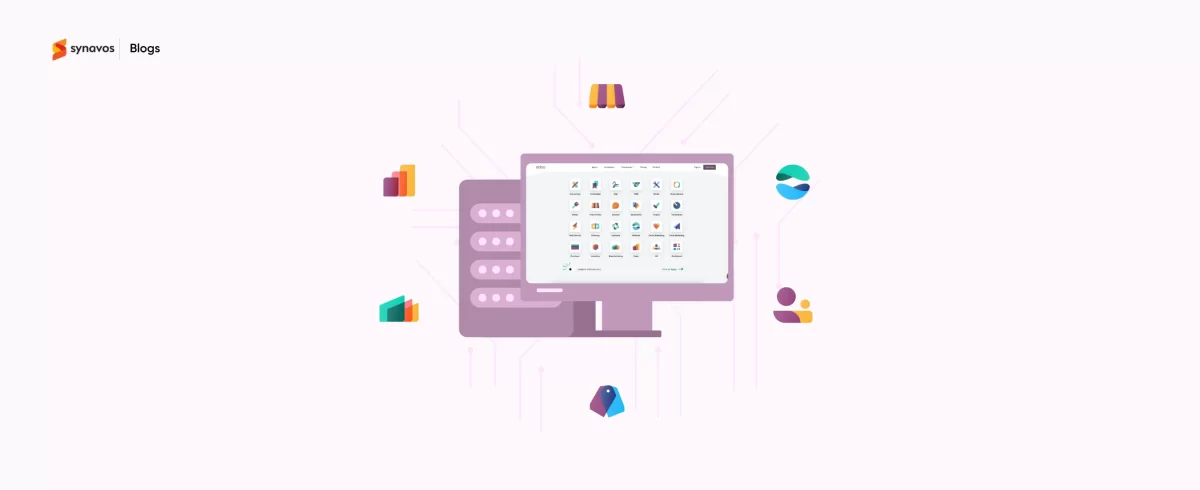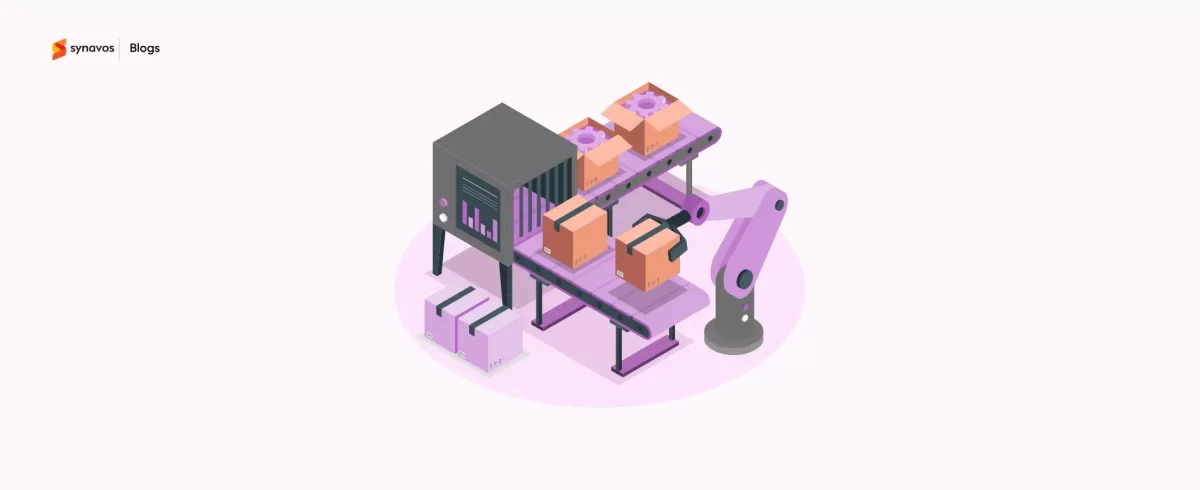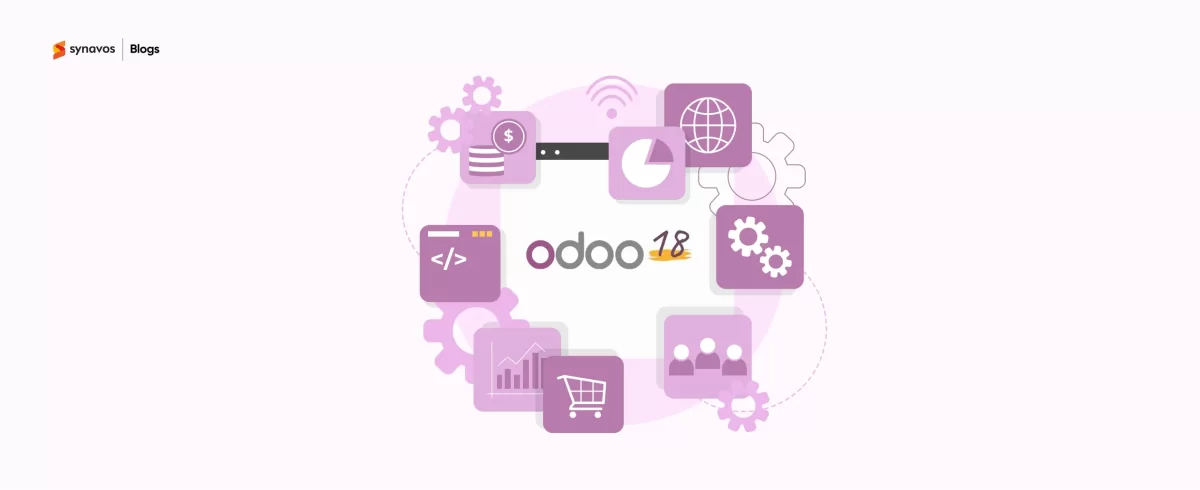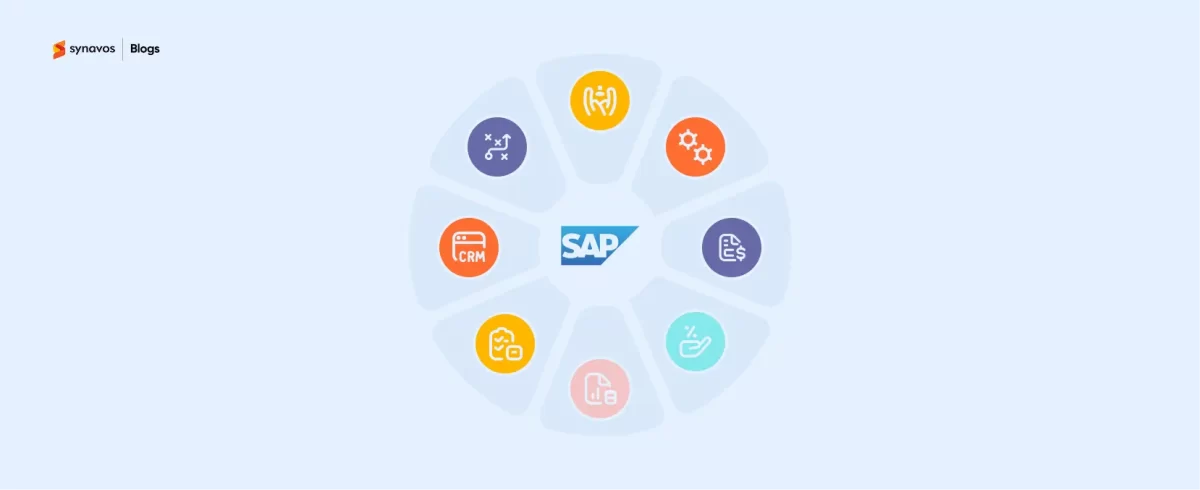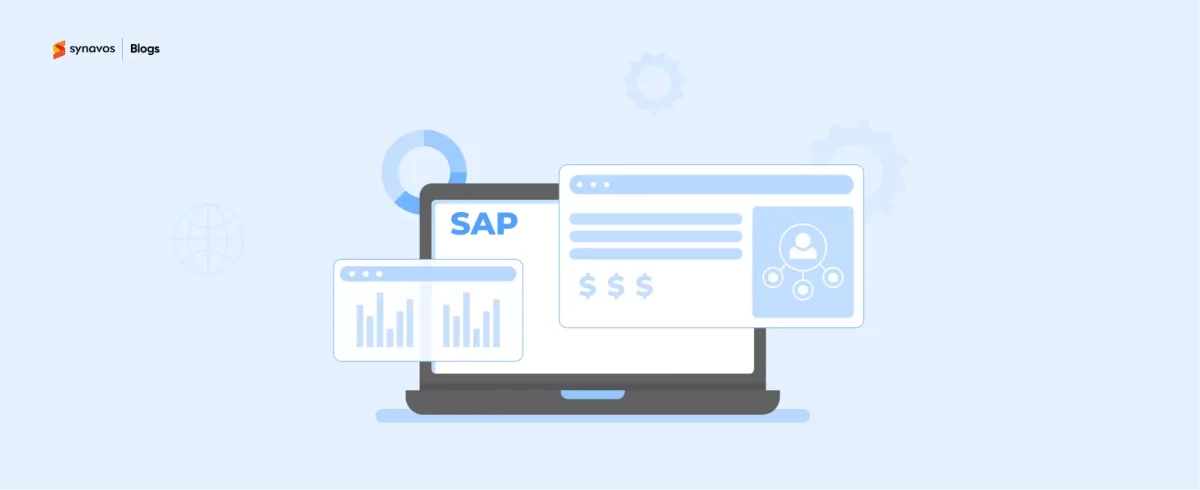Running a business is hard work. Between managing sales, keeping track of inventory, and staying on top of finances, it's easy to feel overwhelmed. Now imagine running your entire business from a single dashboard. Sounds too good to be true, right? Well, get ready to have your mind blown, because that's exactly what Odoo offers!
From sales and marketing to finance and human resources, Odoo provides a unified platform that integrates various business functions seamlessly. This eliminates the need for multiple, disconnected systems and ensures a smooth flow of information throughout your organization. But here's the catch – implementing Odoo isn't as simple as clicking 'install.'
In this blog, we will discuss how Odoo can transform your operations, walk you through the steps for a successful implementation, and share best practices to help you make the most of this investment. Whether you're a small business owner or managing a large corporation, this blog is for you. It's time to dive in!
What is Odoo?
Odoo is a comprehensive, open-source enterprise resource planning (ERP) software that offers a suite of integrated business apps to manage various operations within an organization. From accounting, inventory, and human resources to sales, customer relationship management (CRM), and e-commerce, Odoo provides a wide range of software tools to streamline all business functions.
What makes Odoo stand out is its modular structure—businesses can start with the specific modules they need and expand over time as their needs grow. It’s user-friendly interface and customizable features make it suitable for organizations of all sizes, from small startups to large enterprises. With the availability of both a community edition (free) and an enterprise edition (with advanced features and support) available, you can choose a version that best fits your needs and budget.
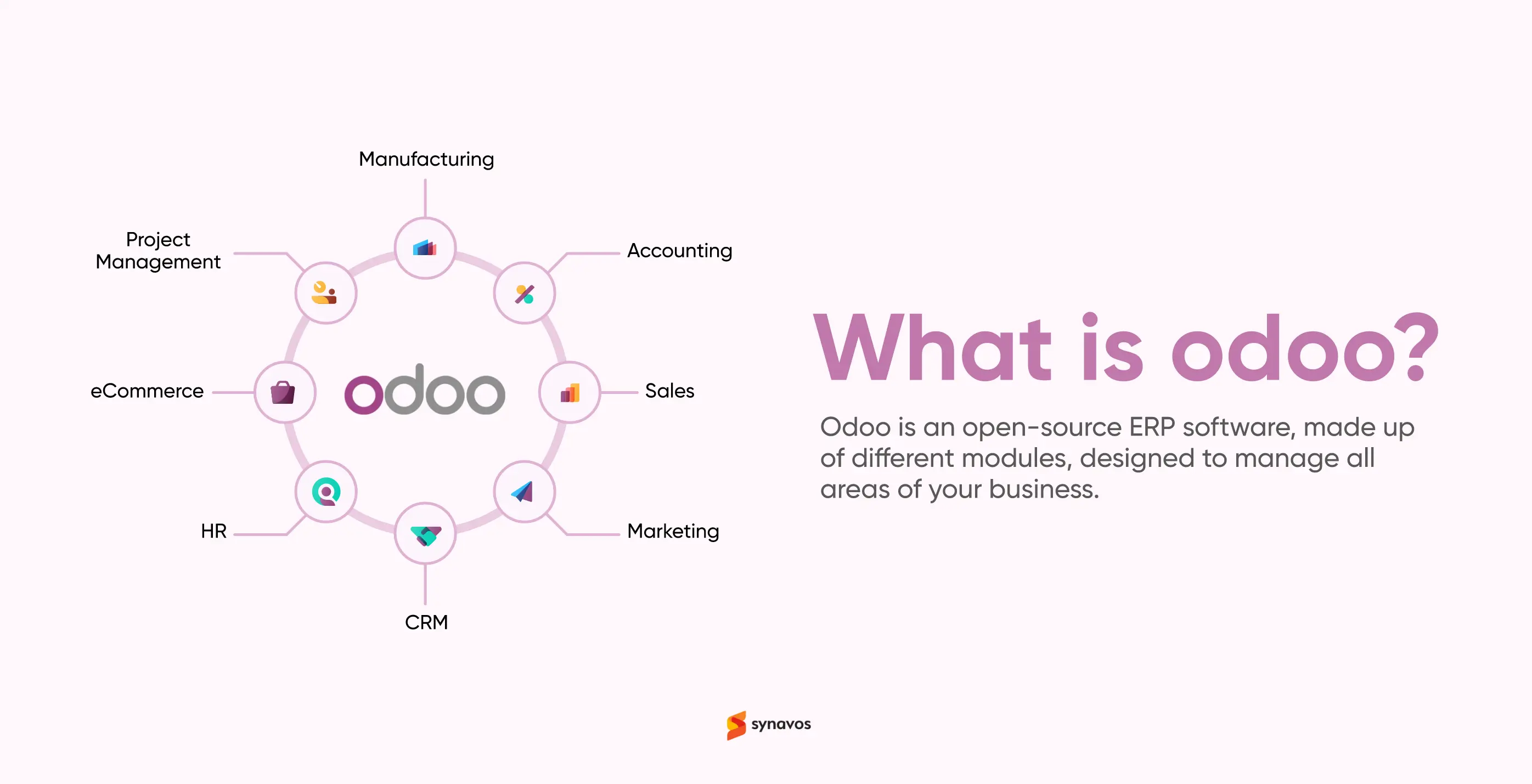
Why is Odoo Popular?
- Fits Your Business Like a Glove: Odoo molds itself to your specific workflows, making sure it aligns with the way your business operates.
- Grows with You: As your business expands, you can easily add new modules to support additional needs—no need to switch systems down the road.
- Simple to Use: Using Odoo is easy and straightforward, so your team can get comfortable with it quickly.
- Affordable Access: With an open-source version available, you can access powerful tools without worrying about high licensing fees.
- All-in-one Solution: Odoo brings everything together in one place, so your teams can work together seamlessly and avoid the hassle of switching between different systems.
By centralizing data and automating processes, Odoo helps companies increase efficiency, improve collaboration, and make better-informed decisions.
Benefits of Implementing Odoo
Odoo offers a plethora of benefits for businesses of all sizes. Here are some of the key advantages:
-
Modular Flexibility
One of the standout features of Odoo is its modular architecture. Businesses can choose from a variety of modules tailored to their specific needs—be it sales, inventory, manufacturing, or accounting. This flexibility allows companies to implement only the functions they require, making Odoo a highly customizable solution.
For example, a retail business may focus on inventory management and point-of-sale modules, while a manufacturing firm might prioritize production planning and supply chain management. This modular approach means businesses can start small and gradually expand their ERP capabilities as their needs grow.
-
Cost-Effectiveness
As an open-source platform, Odoo offers significant cost savings compared to traditional ERP systems. Organizations can customize the software to suit their operations without the hefty price tag often associated with proprietary systems. This affordability makes Odoo accessible for businesses of all sizes.
Additionally, because Odoo can integrate with existing software, companies can avoid costly overhauls of their entire IT infrastructure. This enables a smoother transition and minimizes the financial impact of switching to a new ERP system.
-
Centralized Data Management
Odoo enables centralized access to vital business information. With all data stored in one place, teams can make informed decisions based on real-time insights. This level of data management reduces the risk of errors and improves overall efficiency.
For instance, sales, marketing, and finance teams can access the same customer data, ensuring that everyone is aligned on key metrics. This transparency improves collaboration and enables data-driven decision-making across the organization.
-
Scalability
Odoo is designed to grow with your business. As your needs evolve, you can easily add new modules or functionalities without major disruptions. This scalability ensures that your ERP system can adapt to future challenges.
Whether expanding into new markets or introducing additional product lines, Odoo can accommodate changing business requirements. For companies who want to remain relevant and adaptable to new trends, this adaptability is critical.
-
User-Friendly Interface
Odoo's interface is designed with the end-user in mind. The intuitive, web-based interface of Odoo makes it easy for employees to learn and use. This ease of use leads to quicker adoption rates and less resistance to change.
Moreover, Odoo’s customizable dashboards and reporting tools enable users to tailor their experience according to their roles. This personalization not only boosts user satisfaction but also enhances productivity, as employees can focus on tasks relevant to them.
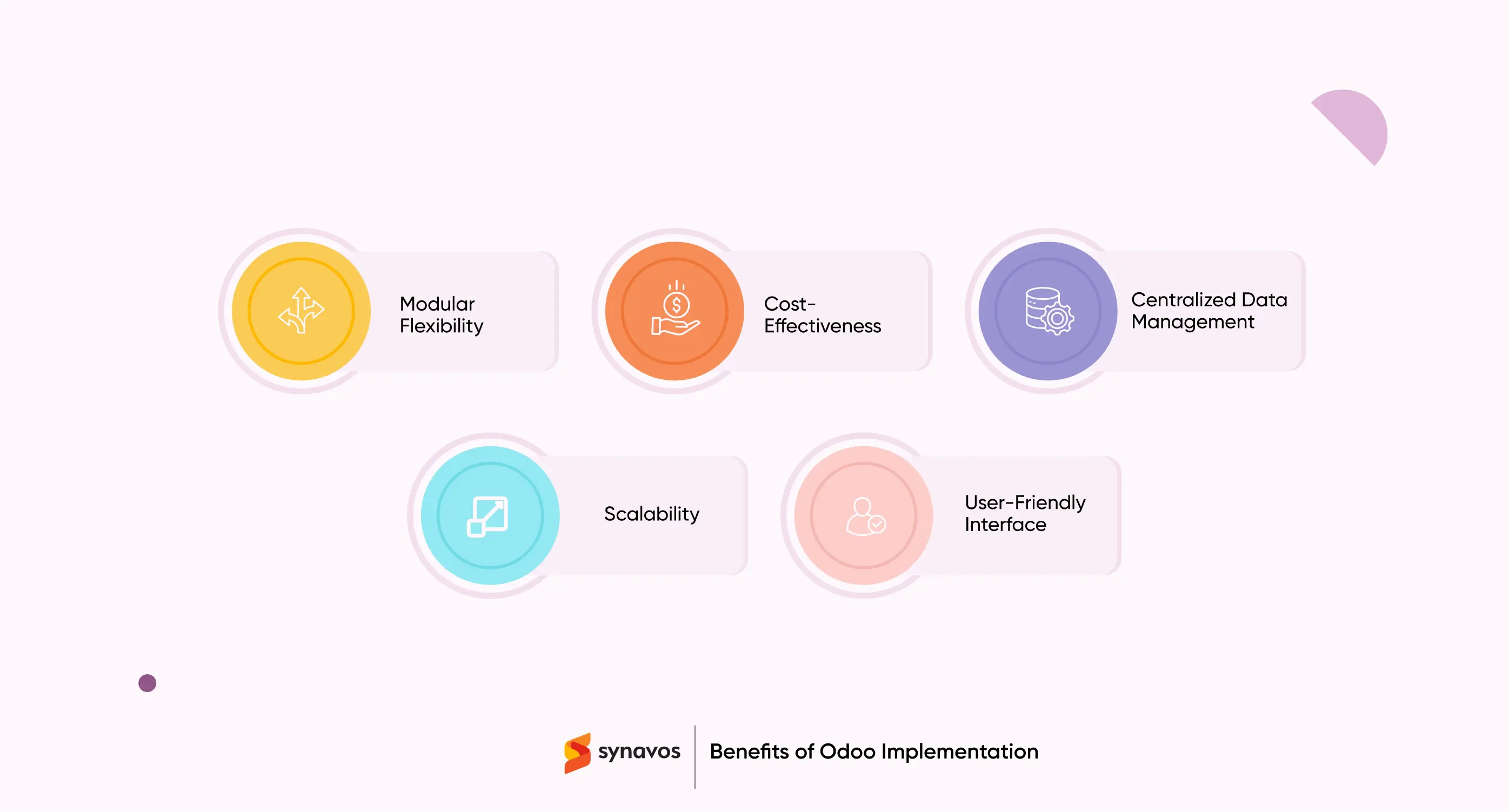
Now, before you dive into the steps of Odoo implementation, you should take a step back and assess your company's readiness, as well as ensure that the strategy is established. Our blog, 7 Key Considerations Before Implementing Odoo in Your Business, provides a comprehensive guide to help you evaluate critical factors such as resource allocation, customization needs, and employee readiness.
Key Steps for a Successful Odoo Implementation
Implementing Odoo is a structured process that requires careful planning and execution. Let's break down the key steps:
1. Define Project Scope and Objectives
To kickstart your Odoo implementation on the right foot, it’s crucial to define your project’s scope and objectives. Think about the specific challenges your business is facing—maybe it's slow processes or data scattered across different platforms. Identifying these pain points will help you clarify how Odoo can step in and make a real difference.
Next, set clear, measurable objectives. What does success look like for you? Consider establishing Key Performance Indicators (KPIs) like user adoption rates and improvements in efficiency. By having these benchmarks, you’ll not only have a clear path forward but also a way to celebrate your progress along the journey.
2. Select the Right Odoo Modules
Choosing the right Odoo modules can feel overwhelming, but it doesn’t have to be. Begin by assessing your business needs and mapping them to Odoo's available modules. Consider both core modules provided by Odoo and community modules that might offer specialized functionality. Prioritize modules based on their potential impact on your business operations and alignment with your defined objectives.
It's important to strike a balance between addressing immediate needs and allowing for future growth. Don't overlook the interdependencies between modules, as some functionalities may require multiple modules to work effectively. It's advised to consult with certified Odoo partners to ensure you're making informed decisions about module selection.
Not sure how to choose the right Odoo partner for your business? Check out our blog, "7 Steps to Choose the Right Odoo Partner for Your Business"!
3. Assemble a Skilled Implementation Team
A successful Odoo implementation requires a skilled and dedicated team. Consider the following roles when assembling your team:
- Project Manager
- Odoo Consultant
- Business Analyst
- Data Migration Specialist
- Technical Specialist
- End-User Representatives
- IT Support Staff
It's important to select team members who have the necessary skills and experience to ensure a successful implementation. Consider their knowledge of Odoo, project management experience, and ability to work collaboratively.
4. Data Migration and Integration
Data migration can be one of the trickiest parts of your Odoo implementation, but with the right approach, you can navigate it successfully. Start by identifying all data sources that need to be migrated to Odoo, including customer information, financial records, inventory data, and historical transactions. Then develop a robust data migration strategy that includes mapping data fields, handling data transformations, and establishing data validation rules.
Furthermore, plan for the integration of Odoo with other essential business systems, such as e-commerce platforms or CRM tools. This may involve developing custom APIs or using pre-built connectors. Proper data migration and integration set the foundation for a smooth transition to Odoo.
5. Customize and Test the System
Odoo is flexible, and that’s one of its biggest strengths. Take the time to customize the system to fit your specific workflows. This is where you can make Odoo truly yours, tailoring it to support how you do business.
But don’t skip the testing phase! Before you go live, create a testing environment that mimics real-world scenarios so you and your team can explore its functionalities. Encourage feedback during this phase; it’s your opportunity to identify and address any issues before your official launch.
6. Employee Training and Change Management
The success of your Odoo implementation hinges on how well your team adapts to the new system. Invest in tailored training programs that speak directly to the needs of different user roles. This personalized approach will help ensure that everyone feels confident in using Odoo.
Open communication is key during this transition. Encourage your team to share their concerns and questions to create an environment where everyone feels heard and supported. Providing ongoing training and resources after the launch can further reinforce learning and boost confidence of your team. Remember, it’s all about making the transition as smooth as possible for everyone involved.
7. Go-Live and Post-Launch Support
The moment has arrived: it’s time to go live! As you launch the system, keep a close eye on how it performs. Monitor user feedback to identify any issues that may arise and address them promptly. Establish a dedicated support channel for users to voice their concerns or questions to ensure they feel supported throughout the transition.
Regular check-ins and feedback sessions are essential for maintaining the system's effectiveness. Be proactive in addressing any issues that arise and continuously seek ways to improve the user experience. Your commitment to ongoing support will not only enhance user satisfaction but also ensure that Odoo delivers lasting value to your organization.
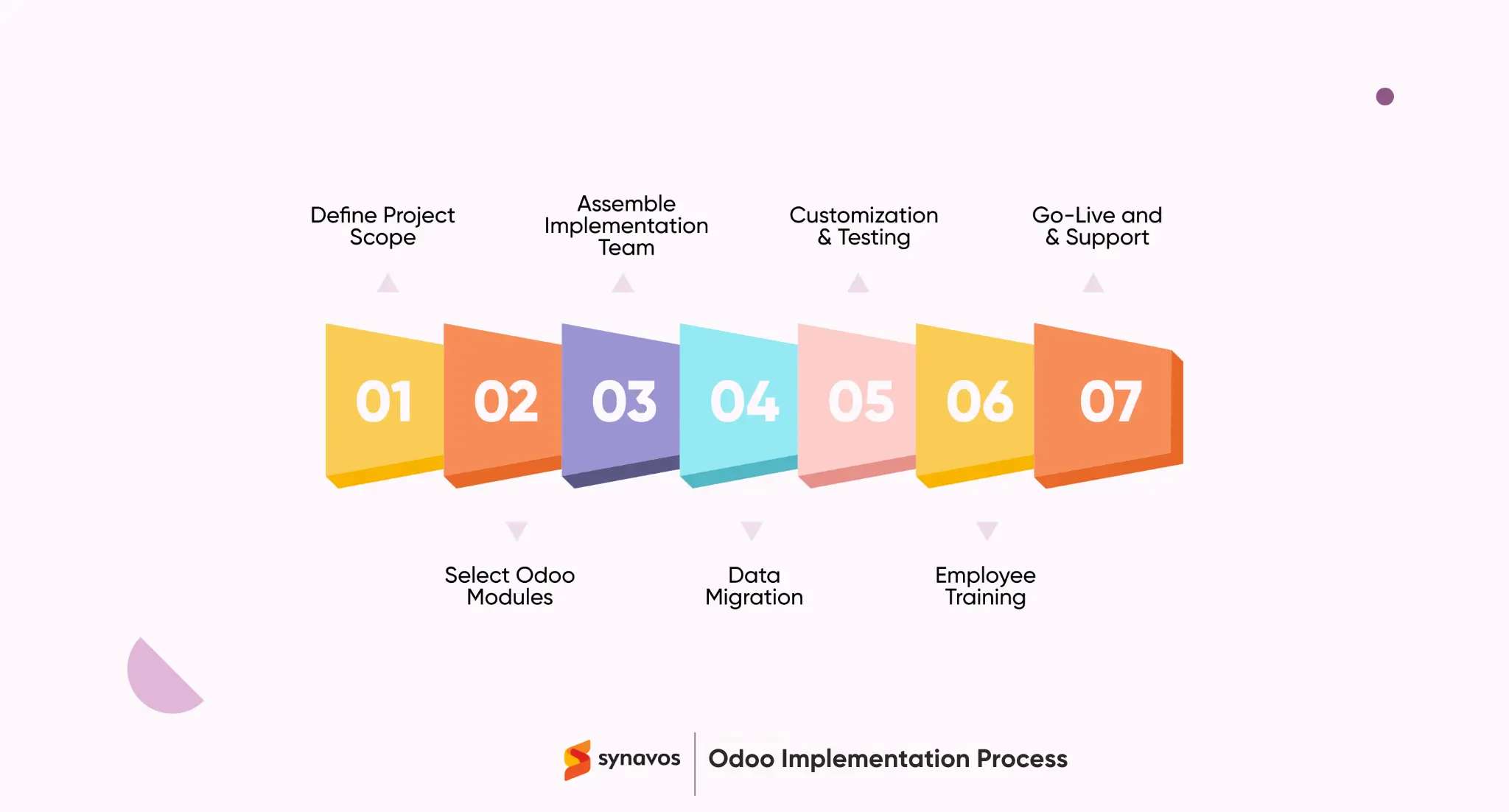
Best Practices for a Seamless Odoo Implementation
To ensure a successful Odoo implementation, consider the following best practices:
-
Involve End-Users from the Beginning
When embarking on your Odoo implementation journey, one of the smartest moves you can make is to involve your end-users right from the start. These are the people who will be using the system daily, and their insights can provide you with a wealth of information. By engaging them early on, you not only gather valuable input on their needs and expectations but also build a sense of ownership and excitement around the new system.
Consider organizing workshops or informal discussions where they can share their thoughts and experiences. By listening to them, you pave the way for smoother adoption and a system that truly meets their needs.
-
Choose the Right Implementation Partner
Selecting the right implementation partner can significantly impact the success of your Odoo project. Look for a partner with a proven track record in Odoo implementations, preferably with experience in your industry. They should have a deep understanding of Odoo's capabilities and best practices for implementation.
A good partner should be able to provide references and case studies of successful implementations. They should also be willing to transfer knowledge to your team, ensuring you can manage and maintain the system independently in the long run. Remember, the cheapest option isn't always the best; prioritize partners who can deliver value and ensure a smooth implementation process.
-
Plan for Change Management
Change management is a critical aspect of any Odoo implementation that often gets overlooked. It involves preparing your organization for the transition to the new system and minimizing disruption to business operations. Develop a comprehensive change management plan that addresses the human side of the implementation. This includes clear communication about the reasons for the change, the benefits it will bring, and how it will affect day-to-day work.
Identify potential sources of resistance and develop strategies to address them. Create an environment where team members feel safe to express their worries and ask questions. By showing that you’re committed to their success, you’ll encourage a culture of acceptance and make the transition smoother for everyone involved.
-
Focus on Continuous Improvement
Implementing Odoo is not a one-time event but an ongoing process of improvement and optimization. After the initial go-live, focus on continuously refining and enhancing your Odoo system to meet evolving business needs. Regularly check in with your team to gather feedback on how the system is performing and where it could be better. Encourage an open dialogue where everyone feels comfortable sharing their ideas for enhancement.
Take advantage of Odoo’s updates and new features to ensure your system evolves alongside your business. Continuous improvement not only helps in maximizing the value of your Odoo investment but also ensures that your system remains aligned with your business goals as they evolve over time.
Wrapping Up: Key Takeaways for a Successful Odoo Implementation
Your Odoo implementation isn't just about installing new software – it's about transforming the way you work. It's about streamlining those processes that have been causing headaches, accessing data that was once scattered across different systems, and empowering your team to collaborate in ways they never could before.
As you move forward, keep in mind that this journey is unique to your business. The steps we've outlined are your roadmap, but the destination is one that you'll define. Whether you're looking to improve customer relationships, optimize inventory management, or gain deeper insights into your finances, Odoo can be tailored to meet your specific needs.
Ready to Start Your Odoo Journey?
Take the next step towards transforming your business with Odoo. As an official Odoo partner, Synavos has successfully implemented Odoo for numerous businesses across the Middle East and Pakistan. Our expertise and local understanding make us uniquely qualified to guide you through your Odoo implementation.
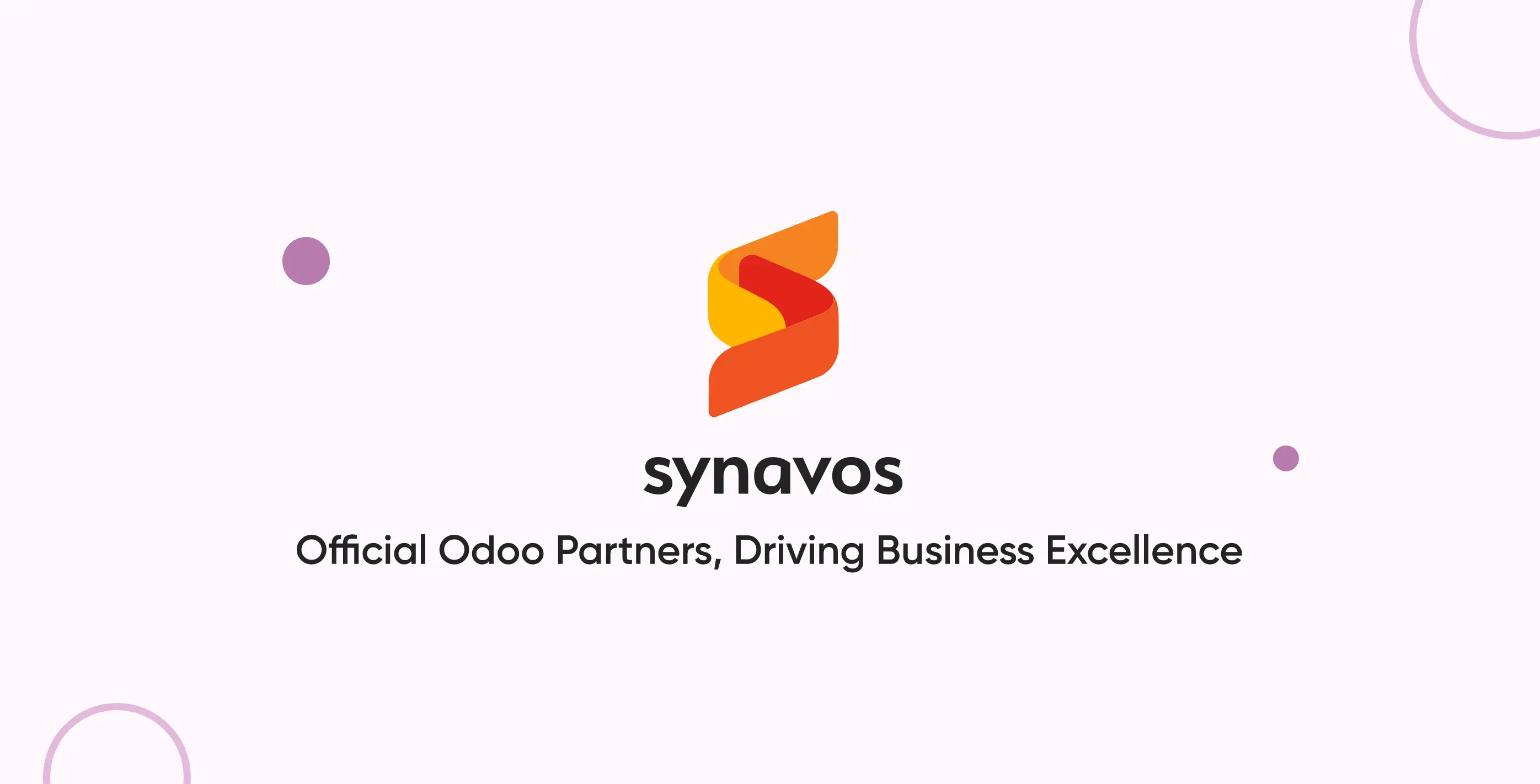
Contact Synavos today for an all-free consultation and discover how we can tailor Odoo to meet your specific business needs. Don't miss out on this opportunity! You’ll regret missing it.




















